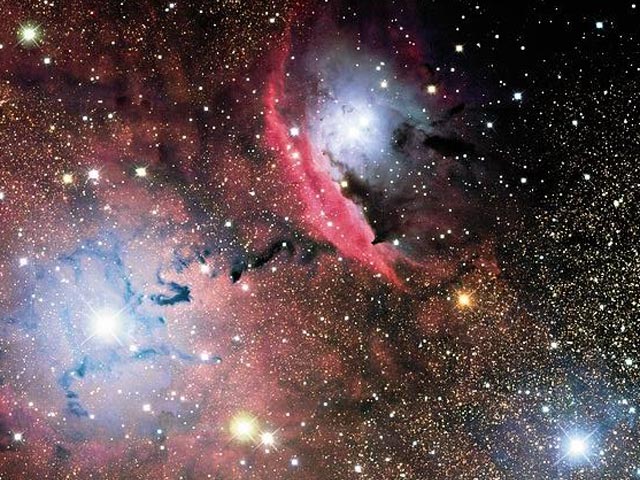
Add To Favorites
When stars form, pandemonium reigns. A textbook case is the star forming region NGC 6559. Visible above are red glowing emission nebulas of hydrogen, blue reflection nebulas of dust, dark absorption nebulas of dust, and the stars that formed from them. The first massive stars formed from the dense gas will emit energetic light and winds that erode, fragment, and sculpt their birthplace. And then they explode. The resulting morass can be as beautiful as it is complex. After tens of millions of years, the dust boils away, the gas gets swept away, and all that is left is a naked open cluster of stars.
2005-05-09 Jean-Charles Cuillandre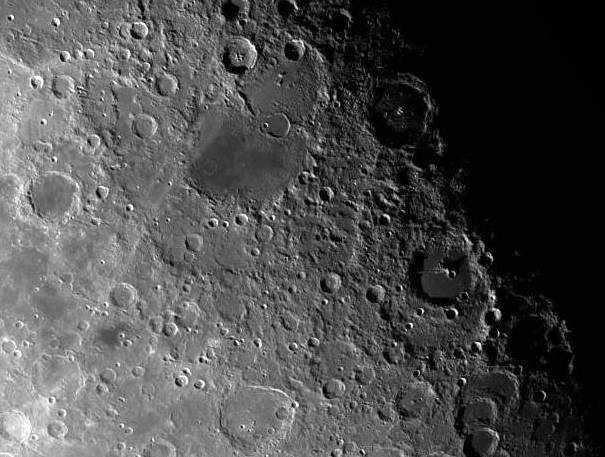
Add To Favorites
The Moon's surface is covered with craters, scars of frequent impacts during the early history of the solar system. Now, recent results from the Lunar Prospector spacecraft support the idea that the Moon itself formed from the debris of a giant impact of a mars-sized planetary body with the Earth nearly 4.5 billion years ago. The impact theory of lunar origin can explain, for example, why Moon rocks returned by the Apollo missions have the same isotopic ratios as Earth rocks while the Moon seems deficient in heavy elements like iron. It can also explain a critical finding of the Lunar Prospector experiments - that the Moon's core is proportionally very small. If the Moon formed simply as a "sister world", its origin paralleling Earth's formation from the primordial solar nebula, it should have similar iron content and relative core size. But material blasted from the surface of Earth by an impacting body would lack the iron and heavy elements which had settled to the Earth's core yet retain similar ratios of chemical isotopes. A fraction of this debris cloud would remain in Earth orbit ultimately forming the Moon.
1999-03-26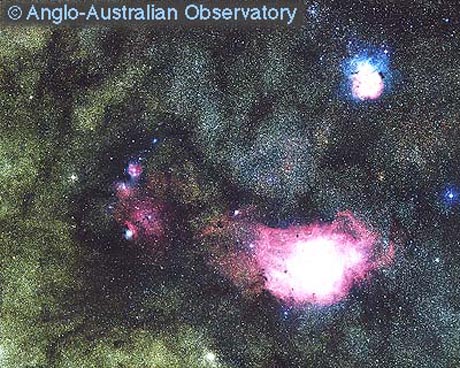
Add To Favorites
A variety of stars and nebulae can be found towards the constellation of Sagittarius. Dense fields of stars laced with dark lanes of dust crowd this region only a few degrees from the center of our Galaxy. Prominent nebulae include the red Lagoon Nebula (M8) in the lower right and the multicolored Trifid Nebula (M20) in the upper right. Recent high-resolution images of these nebulae show unusual features such as funnel-shaped clouds and proplyds that are not well understood.
1998-09-07 D. Malin (AAO), AATB, UKS Telescope
Add To Favorites
Ganymede's surface is a wrinkled mess. As large ice-sheets shift on the moon's surface, parts of the surface buckle causing high ridges, deep furrows, and parallel grooves. This photo, taken by the Galileo spacecraft currently orbiting Jupiter, was released yesterday. The large circular feature near the picture bottom is a large impact crater. The impact that caused this large crater also caused the strange dark ejecta seen to the crater's right. The Sun illuminates the scene from the lower left. The Galileo spacecraft has also just discovered that Ganymede has a region of orbiting charged particles called a magnetosphere - a first for any moon. How Ganymede is able to generate a magnetosphere is a mystery. APOD's Archive of Galileo at Ganymede
1996-07-11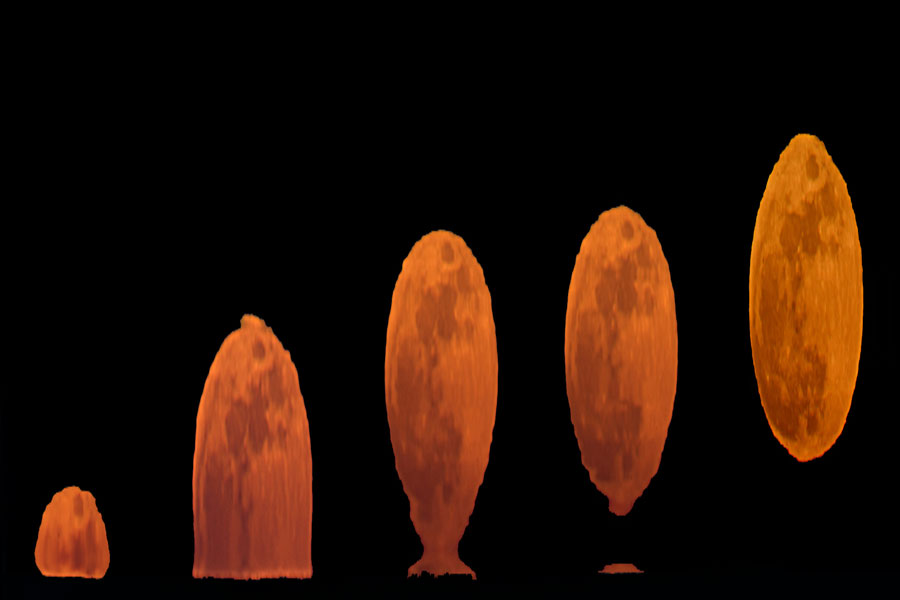
Add To Favorites
What's happened to the Moon? Nothing, although from some locations, February's full moon, which occurred about two weeks ago, appeared strangely distorted as it rose. Visible in particular was a curiously inverted image section pinched off near the horizon, an effect dubbed the Etruscan vase by the pioneering science fiction writer Jules Verne for its familiar shape. This odd moon image piece was created by moonlight refracting through an atmospheric inversion layer on Earth where cold air was trapped near the surface. The photographer also reported that, as the moon rose, a red rim was faintly visible on the lower part of the moon, while a green rim appeared on the top. Similar to the Sun's famous green flash, these effects arise when the Earth's atmosphere acts like a prism, sending different colors of light on slightly different paths. The above image mosaic has been horizontally compressed by computer to fit a standard screen.
2009-02-23 John Stetson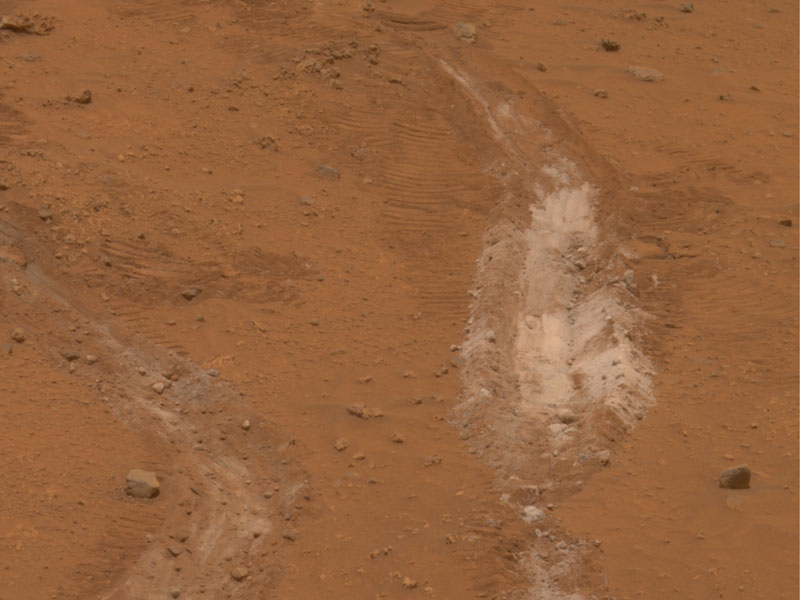
Add To Favorites
You're rolling across Mars when you unexpectedly uncover some unusually light soil. You stop. You turn. You return to inspect the soil and find out it is almost purely silica -- the main ingredient in quartz and glass. Such soil has never been found on Mars before. What created this soil? Since you are the robotic rover Spirit currently rolling across Mars, you send the images and data back to Earth for analysis. Your scientist friends from the blue water planet say that such soil on Earth is usually created by either volcanic steam or a hot spring. The second hypothesis in particular indicates, once again, a wet past for part of Mars, as possibly hot water saturated with silica deposited the white soil. Intriguingly, on Earth, living microbes typically flourish under either condition. Pictured above, the uncovered light soil is visible on the right. APOD presents: Astronomy Pictures of the Year for 2007
2007-12-18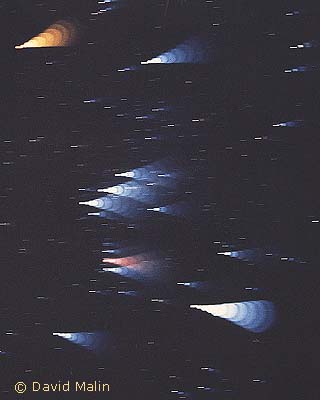
Add To Favorites
What determines a star's colour? Its temperature. Red stars are cool, around 3,000 kelvins (K), while blue stars are hotter and can have temperatures over 30,000 K. Our own lovely yellow Sun's temperature is a comforting 6,000 K. Differences in star colours are dramatically illustrated in the above photo of the constellation Orion, made using a "star trail step-focus" technique. In this technique, a time exposure is used to create star trails, but during the exposure, the focus is changed in steps. For the brighter stars, the blurred image produces more saturated colours in photographs. At the upper left, the cool red supergiant Betelgeuse stands out from the other, hotter, bluish stars composing the body of the constellation. Bright Rigel, a blue supergiant, is at the lower right.
1998-08-29 David Malin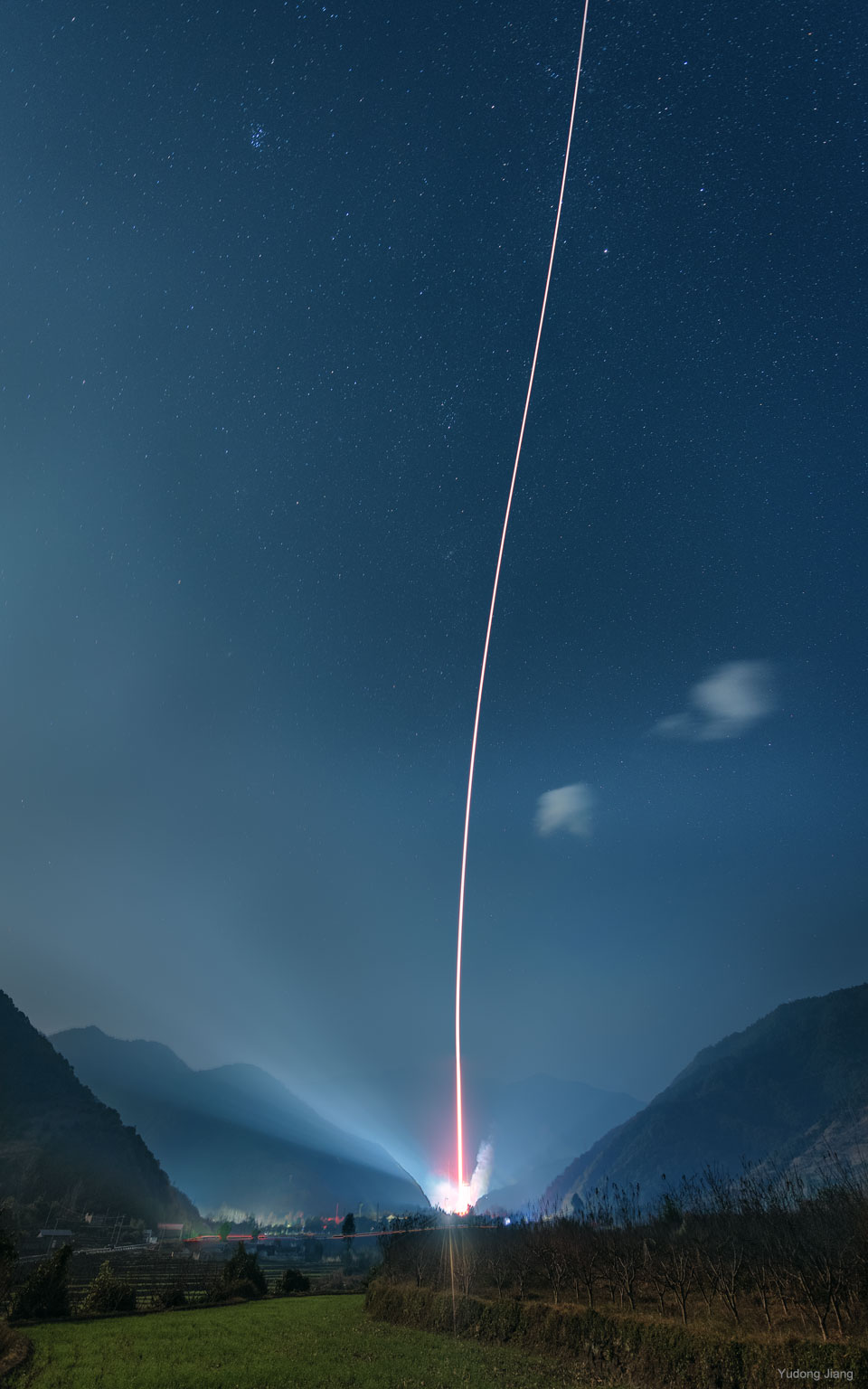
Add To Favorites
What's happening between those mountains? A rocket is being launched to space. Specifically, a Long March 3B Carrier Rocket was launched from Xichang Satellite Launch Center in Sichuan Province in China about two week ago. The rocket lifted two navigation satellites to about 2,000 kilometers above the Earth's surface, well above the orbit of the International Space Station, but well below the orbit of geostationary satellites. China's Chang'e 3 mission that landed the robotic Yutu rover on the Moon was launched from Xichang in 2013. The featured image was taken about 10 kilometers from the launch site and is actually a composite of nine exposures, including a separate background image.
2018-12-04 Yudong Jiang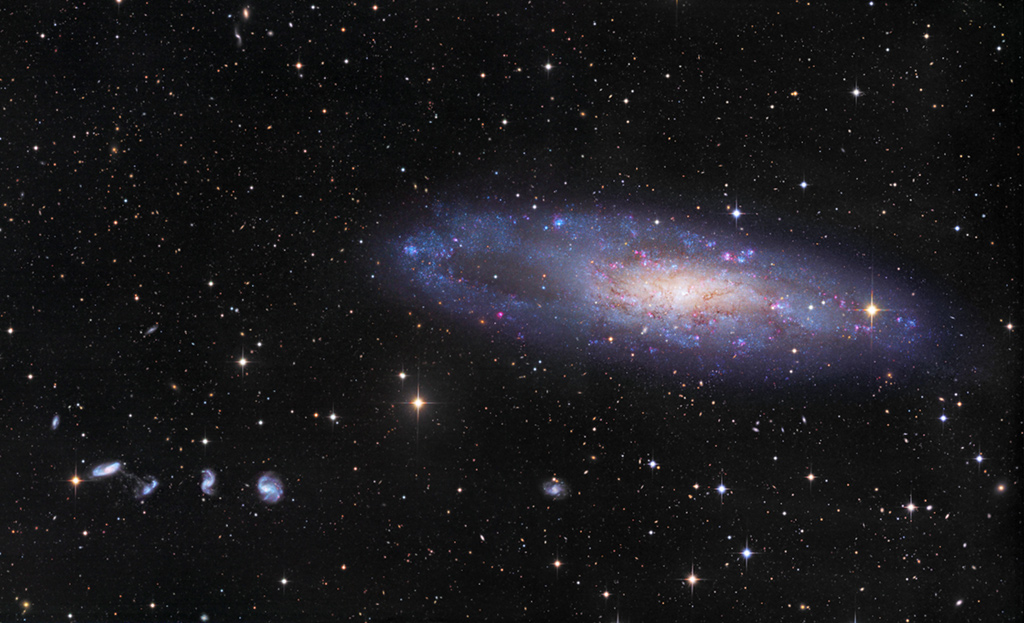
Add To Favorites
About 70,000 light-years across, NGC 247 is a spiral galaxy smaller than our Milky Way. Measured to be only 11 million light-years distant it is nearby though. Tilted nearly edge-on as seen from our perspective, it dominates this telescopic field of view toward the southern constellation Cetus. The pronounced void on one side of the galaxy's disk recalls for some its popular name, the Needle's Eye galaxy. Many background galaxies are visible in this sharp galaxy portrait, including the remarkable string of four galaxies just below and left of NGC 247 known as Burbidge's Chain. Burbidge's Chain galaxies are about 300 million light-years distant. The deep image even reveals that the two leftmost galaxies in the chain are apparently interacting, joined by a faint bridge of material. NGC 247 itself is part of the Sculptor Group of galaxies along with the shiny spiral NGC 253.
2018-03-30 CHART32 Team
Add To Favorites
Why would the sky glow red? Aurora. Last week's solar storms, emanating mostly from active sunspot region 1402, showered particles on the Earth that excited oxygen atoms high in the Earth's atmosphere. As the excited element's electrons fell back to their ground state, they emitted a red glow. Were oxygen atoms lower in Earth's atmosphere excited, the glow would be predominantly green. Pictured above, this high red aurora is visible just above the horizon last week near Flinders, Victoria, Australia. The sky that night, however, also glowed with more familiar but more distant objects, including the central disk of our Milky Way Galaxy on the left, and the neighboring Large and Small Magellanic Cloud galaxies on the right. A time-lapse video highlighting auroras visible that night puts the picturesque scene in context. Why the sky did not also glow green remains unknown.
2012-02-01 Alex Cherney (Terrastro, TWAN)